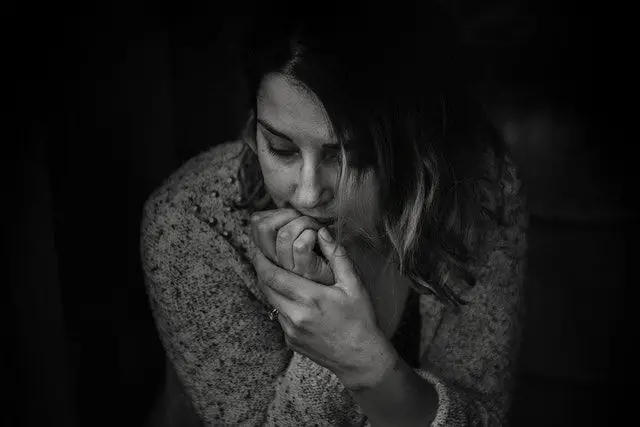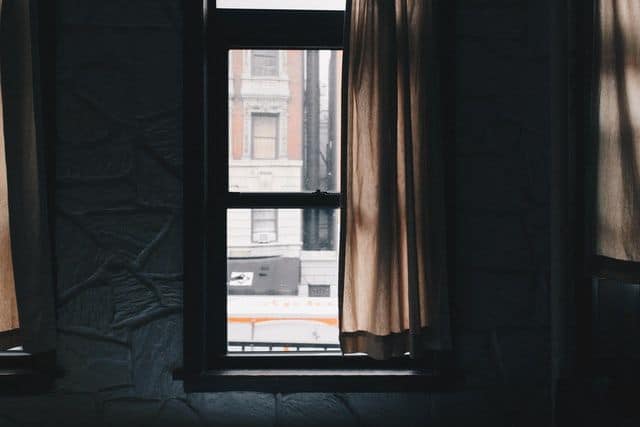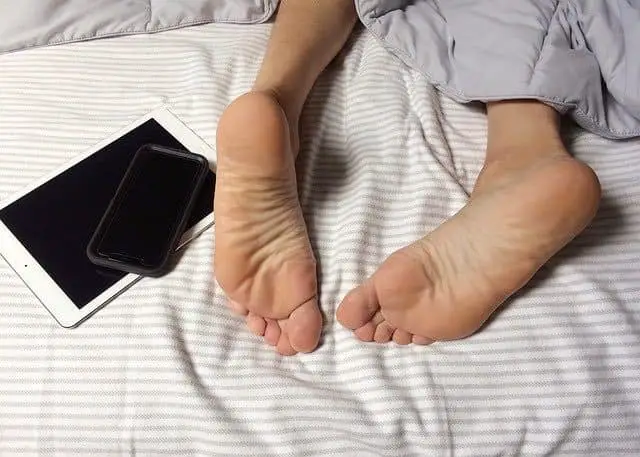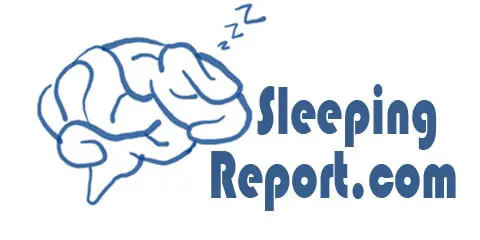Sleeping with the lights on is a common question with many different answers. Is it possible? If possible, how? What are the advantages and disadvantages?
The quick answer, to whether it is possible, is yes. It is possible, yet discouraged by most experts, and if it is necessary, then be sure to do it correctly. There are several advantages and disadvantages of sleeping with the lights on, however, in the end, only you can make the best choice for your situation.
In this article, I will walk you through the effects, the how-to, the right and wrong, as well as, the advantages and disadvantages. Among those topics, I will break down what I know from experience, as well as, what my research brings me from the experts.

Let’s Start With the Effects
Decreased melatonin production
When the lights are on at bedtime, our body produces less melatonin, which is a hormone that the pineal gland in your brain produces that causes your body to feel sleepy. With less melatonin in your system, your body can’t regulate the proper time for sleep, thus interrupting your natural circadian rhythm, or sleep cycle.
Alternatively, when the lights are on at bedtime, your body produces more of the stress hormone cortisol. Increased levels of this hormone have a lot to do with the brain’s ability to function. The reason this happens is the increase in cortisol leads to more stress which can lead to heart problems, mess with your mental health, and keep you in a state of fight or flight mode that riddles us with anxiety. With these increased risks, your body never has a chance to calm itself, in turn making it even harder to sleep and leading to insomnia.

Increased risk of depression
According to Psychology Today:
Light-at-night may contribute to depression and suicidal thoughts and gestures by suppressing sleep signals, elevating stress hormones, altering mood chemistry, and disrupting the body’s internal rhythms.
There are so many people who struggle with depression, especially in the winter when there is much less light, researchers convey that light is a strong influence regarding mental health issues.
One way to combat this depression and keep your sleep cycle flowing smoothly is to use a special light box that emits natural light several times throughout the day. This puts more light into your eyes during the day, allowing your brain to turn that light into daytime energy. It is also a strong way to give yourself a healthy dose of Vitamin D which naturally comes from sunlight, but on dark days and when you are depressed, extra exposure is a good idea.
Increased risk of cancer
There is a theory, called the LAN (Light at Night) theory, that basically says that the increased use of electricity at night can cause the risk of getting cancer to escalate.
Looking into breast cancer, specifically, scientists have learned that when your body’s levels of melatonin and cortisol are too low, it allows a high level of estrogen to accumulate in your body. High levels of estrogen are often precursors to breast cancer.
This is also true of prostate cancer. When high levels of hormones collect in the male body, it too can increase the risk of developing cancer.
Upsets metabolic functions
Having the lights on at night can also sway the way you eat. When your natural eating patterns become disrupted it can lead to obesity, and all diseases related to obesity, such as diabetes and high cholesterol leading to a heart attack or stroke.
This is due to our old friends’ melatonin and cortisol again. Our circadian rhythms get all messed up and this causes us to eat at different times than our bodies want us to.
The How Tos

First, let’s discuss ways of keeping your room dark.
Blackout curtains or blinds.
It may be overkill, but researchers have found that for the best room darkening effect, you should use both. These are a few product examples that will serve the purpose: H. Versailtex Tie Up Curtains and Allesin Cordless Roll Up Blinds. They work fantastically to keep the streetlights or the sun from glaring in your windows.
You can also buy special clips to hold your curtains and blinds shut all the way, though it is easy to save money by using spring action clothespins from the local dollar store.
Close the bedroom door to block light from the rest of the house.
If this is possible in your situation, it is the best way to go. I would even go so far as to say you should roll up a towel or use a draft dodger at the base of the door to keep light from the rest of the house out of the bedroom.
Now, it should be said, that this is not always possible. It is common for parents of special needs kids to not be able to keep the bedroom door closed because the children may need us urgently in the night and closing the bedroom door would have ill effects on the ability to move out of the room quickly.
In this situation, you could try a curtain at the entrance to the hallway, to try to keep the bedrooms as dark as possible.
Use tinting film to dim your bedroom windows.
Alternatively, you could use tinting film on your windows to keep them dark. The advantage is that you wouldn’t have to fiddle with the curtains, blinds, and clips. Your windows would be dark all the time. The drawback to the tinting film is that your windows would be dark all the time, thus not allowing light in during the day, which is just as detrimental to your health as sleeping with the lights on.
It is best for our natural biological rhythms to have access to both complete darkness and a lot of light during the day.
Now, let’s discuss ways to even out our circadian rhythm even if we sleep with the lights on.

Wear night goggles or a sleep mask.
These goggles are a great solution because they don’t tend to hinder the movement of your eyelashes or lids which makes them more comfortable for your eyes. Unfortunately, some people find them a bit bulky and hard to sleep well in the positions they prefer. This seems to be a good one to try: OriHea Eye Mask. It is soft and the Velcro band customizes to most sized heads.
A sleep mask is more of a blindfold than the goggles, though most people use the names interchangeably. These are what you see in the movies and on tv when the stereotypical high maintenance girl (or guy) is in bed. There are a lot of people who don’t care for these, but they do work if you prefer them. Obviously, the choice is yours. One example is this mask worn by Rhea Perlman in the movie Matilda.
Turn the opposite way of the window when you are sleeping.
This will not take the light away entirely, but in a pinch, it helps more than facing direct light from streetlights or the sun if you are sleeping during the day.
Go to bed earlier.
This may seem a little silly, but seriously, go to bed as soon as it gets dark to eliminate your use of artificial light. It takes a long time for your body to adjust after staring at the screens before bed. If you take those screens out of the equation by going to bed early you will have a leg up on getting a good night’s sleep.
Wear sunglasses when the sun is up in the morning
This is a tip that works mostly for shift workers who must drive home in the morning when the sun is shining. Anyone can use this tip though. I work at home, but I am often awake when the sun comes up.
Experts agree that wearing sunglasses during the time between darkness and full daylight can help keep your circadian rhythm in line with your body’s natural sleep cycle by blocking the light from reaching your eyes and making your body think that it is time to be awake.
What to Do and What Not to Do: Otherwise Known as the Rights and Wrongs

Rights
Stick to red and orange light.
Lights on the red to orange spectrum do not put out as many Lumens as blue or white light, which makes it easier on your eyes to adjust to nighttime.
If you need to have an alarm clock or other types of light in your room, for whatever reason, make sure it emits red, pink, or orange light. If those are not possible, a green light is also effective, though reds and oranges are better.
One tip for finding the proper colored lights is to stock up during the Christmas season. You can find light bulbs during the holidays that fit in standard night lights. They are usually cheaper and if you pick them at the end of season sales, you can get some great deals.
Keep a flashlight next to your bed for emergencies.
If you are going to be sleeping in complete darkness, be sure to keep a flashlight close by in case you do have to get up in the middle of the night.
It is still best to use a red or orange light in your flashlight. You can probably find a flashlight in the automotive section of the store that emits red light. They also flash for roadside emergencies, but you do not have to use this function. I would think that you could change the bulb inside the mechanism to a small colored LED light.
Wrongs:
Spending too much time with blue and white light.
Blue light and white light are what you get from artificial light. Tv screens, computers, smartphones, tablets, you name it, if it has a screen, chances are it emits blue or white light.
One way to eliminate some of the artificial light is to use filters specially made for this on your computers and handheld electronics. Using them on your phone at night will help keep the blue light from your eyes just before bed and thus be less likely cause problems when trying to go to sleep.
Working in the bedroom
There are many reasons why you should not work in the bedroom. First and foremost, if you have your home office set up in the bedroom, your body gets used to working in that room, as opposed to sleeping. Another reason is that you the temptation to get up out of bed to check a few more emails is too strong if you don’t fall directly to sleep.
You should keep all electronic devices out of the bedroom, including that e-reader that you think helps lull you to sleep. Use that room for sleeping only.
Advantages vs. Disadvantages

Benefits of sleeping with the lights on
A nightlight can help you fall asleep by making you feel more comfortable.
Some people hate the idea of being in complete darkness, so having a nightlight on somewhere close can let them relax enough to be able to fall asleep.
This article is owned by Sleeping Report and was first published on July 6, 2019
Nightlights make it easier to check on children in the dark.
If you don’t want to use the suggestion of the red-light flashlight to check on the kids, a nightlight could be just what you need.
Place a light in your room and one in the kid’s rooms for easier access to them. I would still urge you to use a nice red, orange, or pink light, though, to minimize exposure to the blue and white light.
Those afraid of the dark can benefit by a nightlight to lessen anxiety.
Okay friends, this is where I tell the deepest, darkest secrets of many children and adults alike. Darkness terrifies a lot of people.
So, a lot of these folks tend to stay up at night and sleep during the day. I know this goes against everything I have told you thus far but stick with me.
This is much the same schedule that night shift workers face, so the problems that face shift workers also affect them in much the same way.
Disadvantages of sleeping with the lights on

More trouble falling asleep.
Scientists and doctors in the field of sleep research recommend that you give yourself at least two hours to wind down from the artificial light from the screens. It would behoove you to follow the advice of experts and go to bed when the sun goes down to give your body the tools it needs to sleep without artificial light.
Not enough REM sleep to rejuvenate you.
REM sleep, or Rapid Eye Movement, is the state of deep sleep when dreaming often takes place. We need this type of sleep because this is the time that our brain’s learning centers are firing, and the production of most proteins happen.
Our bodies go through four stages as we sleep. The ideal sleep pattern for our inner clocks is what refreshes us and allows us to be ready for the day ahead. However, if that cycle becomes disrupted in any way, our bodies will fight back and keep us in a period of REM sleep until we “catch up” to the lack we faced the night before.
This can lead to many types of problems, including not being able to concentrate, and a feeling of grogginess that lasts through the day. The only solution is to get a good night’s sleep and following the tips in this article can help immensely.
Insomnia
Insomnia can occur for many reasons and professionals consider it a symptom of other problems rather than a condition of its own. There are medical reasons for insomnia, such as anxiety, gastrointestinal problems like reflux, allergies, etc.
This article is owned by Sleeping Report and was first published on July 6, 2019
Findings show that exposure to artificial light and outdoor light at night, also called light pollution, has an integral effect on sleep as well.
Unfortunately, the increase in insomnia often leads to increased use of sleeping pills which can be more harmful than the light pollution that leads to insomnia. The best solution to treat this condition is to try to follow good sleep habits.
Summary
All in all, how to sleep with the lights on is a case study in getting good sleep. Even though the lights are on, it is possible to keep your internal clock ticking in a good way, even if it isn’t the most ideal.
The best thing to help you live your best life is to get a good night’s (or day’s) sleep. Always try to sleep in complete darkness and resist the urge to use your blue light devices for two hours before going to sleep.
By implementing some or all the tricks and tips in this article, you have a better chance of getting that sleep your body has been missing. You may feel less depressed, have more energy throughout the day (without the use of coffee or energy drinks), and reduce your risk of cancer.
SleepingReport.com copyright article was updated on ..
Good luck friends! Here’s to a great night of sleep.

